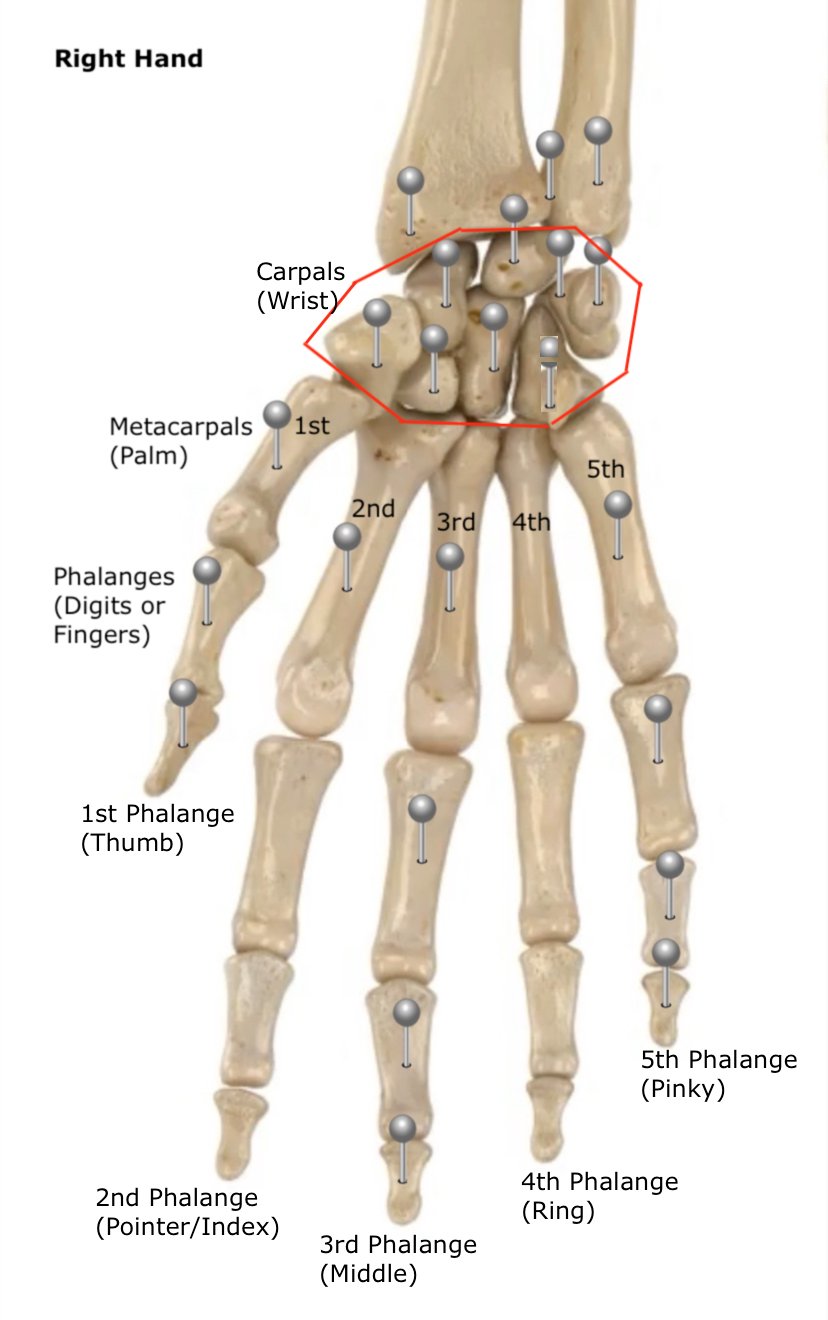Take it in Hand
Take a moment to look at your hands. Notice the shapes of the fingers. As you start to round and bend the fingers inwards notice all the places where they articulate (are jointed for movement). Notice the padding of the palms and, as you fold and unfold the fingers, notice the bones on the top of the hands.
The hand is designed for a variety of tasks. With it’s 27 bones it can articulate to grasp and grip, be utilized for multiple movements spanning from large to precise, and hold loads ranging from heavy to featherweight. Spend a day taking a pause to notice each time you use your hands and how you use them, and you will begin to appreciate their importance and versatility.
Since our hands are mostly covered in skin and skin is our largest sensory organ, along with performing a variety of tasks the hands are also a primary touch receptor, taking in temperature, texture, intensity as well as sensing vibration and pain.
Our hands can also convey feelings through the motions of hugging, clapping, squeezing, pinching….
The wrist (carpals) consists of 8 bones that are part of the hand. The top of these bones form the wrist joint that connects the hand to the two bones of the forearm.
As with the feet, the hands are part of our skeleton’s appendices (appendices being the arms and legs). Given how much we use our hands, and particularly for actions when the fingers tend to curve inward such as keyboarding, texting, holding a book and driving, they can benefit from stretching and strengthening movements. Ellen Saltonstall has numerous stretches and strengtheners for the hands, wrists and arms on her youtube channel. At the end of this post I’ve included individual links to each of the relevant videos.
A gentle movement for the hands that is imbued with sensation is this Finger Meditation. It can be done anywhere, seated, standing or even in bed, and can be a nice way to calm the mind. Before beginning take a few breaths, perhaps letting the exhalations out with an audible sigh.
Gently spread the fingers of one hand. Position your arm anywhere that is comfortable. Eyes can be open or closed.
Place the index finger of the other hand alongside the wrist on the thumb side of the open hand. Take a full relaxed breath (a full breath being a complete inhalation and exhalation.)
With your next inhale begin to trace the outer edge of the thumb up to the top and use the exhale to trace down the inner edge of the thumb. With the next inhale glide the index finger up the side of the opposite index finger, using the exhale to glide down the other side. Use as light a touch as possible while still being able to sense the touch.
Continue inhaling to glide up one side of the middle finger and exhaling to glide down to the valley between it and the ring finger. Inhale up the ring finger, exhale to glide down, inhale up the side of the pinky, exhale to the base of the wrist.
Using this same breath pattern (inhaling upwards, exhaling downwards) reverse the path, eventually returning to the base of the wrist at the thumb.
Switch hands to explore this 5-finger meditation on the other side. When completed pause a moment to notice the residue of this flow.
In addition to the Saltonstall videos linked to above, here is a nice isometric exploration, Wrist Flossing, for nourishing the wrists.
Links to Ellen Saltonstall’s various wrist stretching and strengthening videos:
Hands Warm Up - start with this to prepare hands and wrists for movement
Single Finger Extension - stretching each individual finger, one at a time
Finger Flexion on Thighs - stretches each finger joint
Thumbs Wings Exercise - stretching the thumbs
Aikido Hand Exercises - wrist stretches
Twisting Clasp - stretch for wrists and forearms

